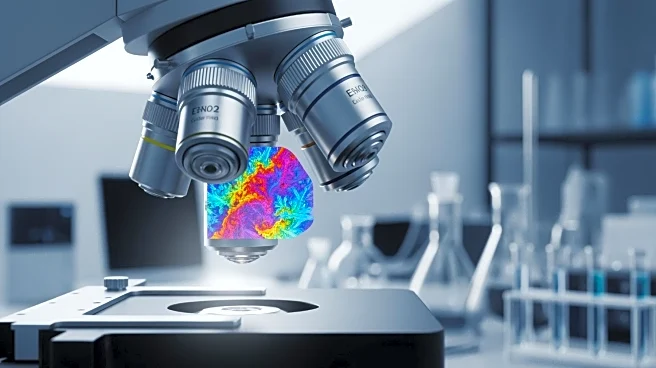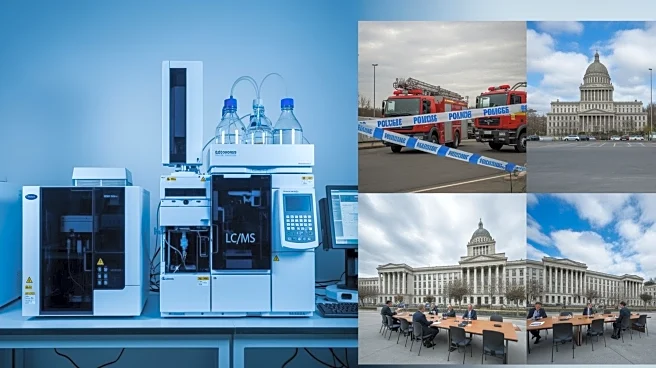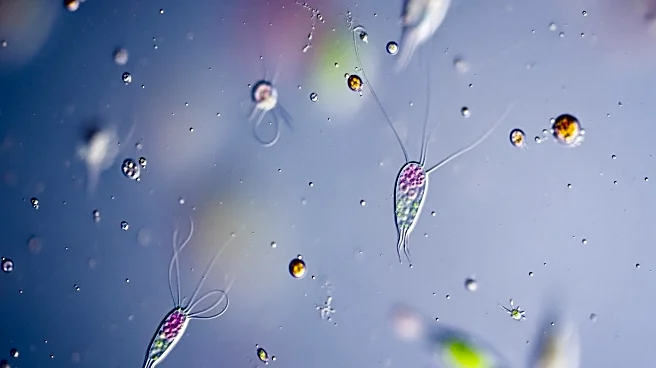What's Happening?
A recent study published in Nature introduces the AXIS-SIM technique, which significantly enhances axial resolution in super-resolution microscopy. This method utilizes axial interference speckle illumination
to achieve near-isotropic super-resolution capabilities, particularly in dual-color live cell imaging. The study details the experimental setup, which includes a silver mirror substrate and a motorized nanostage for capturing 3D images layer by layer. The AXIS-SIM technique demonstrates superior optical sectioning and resolution compared to conventional methods, allowing for clearer visualization of complex volumetric samples. The research highlights the potential of AXIS-SIM in improving imaging quality and resolution in biological systems.
Why It's Important?
The development of AXIS-SIM is significant for the field of microscopy and biological imaging, as it offers enhanced resolution and optical sectioning capabilities. This advancement could lead to more precise imaging of cellular structures and processes, benefiting research in cell biology, medical diagnostics, and drug development. By providing clearer and more detailed images, AXIS-SIM can improve the understanding of cellular mechanisms and interactions, potentially leading to breakthroughs in disease treatment and prevention. The technique's ability to achieve near-isotropic super-resolution in multicolor imaging further expands its applicability in various scientific and medical fields.
What's Next?
The study suggests that AXIS-SIM could be applied to larger-scale imaging projects, maintaining 3D super-resolution while expanding the field of view. Future research may focus on optimizing the technique for different biological samples and conditions, as well as integrating it with other imaging technologies. The potential for AXIS-SIM to be used in high-throughput volumetric imaging could revolutionize the way researchers study complex biological systems, offering new insights into cellular dynamics and interactions. Continued development and application of AXIS-SIM may lead to its adoption in clinical settings for improved diagnostic imaging.
Beyond the Headlines
The AXIS-SIM technique raises important considerations regarding the ethical use of advanced imaging technologies in research and medicine. As imaging capabilities improve, researchers must ensure that data is used responsibly and that privacy concerns are addressed, particularly in clinical applications. Additionally, the technique's ability to provide detailed images of cellular structures may prompt discussions about the implications of visualizing biological processes at such a high resolution, including potential impacts on understanding human biology and disease.











